Life and work
His father, Daniel Jacob Westermayr (1734–1788), was a goldsmith. He learned the craft from him, while attending the State Drawing Academy [ de ]. At first, he focused on creating portraits, as the best source of income. In 1788, he enrolled at the Kunsthochschule Kassel, to continue his studies with one of the numerous members of the Tischbein family; most likely Johann Heinrich Tischbein. His first oil paintings were copies of the Old Masters.
After 1791, Westermayr studied in Weimar, with the copper engraver, Johann Heinrich Lips. Later, he made engraved copies of larger works by other artists, and worked for the publishing house, "Industrie-Kontor", owned by Friedrich Justin Bertuch. He went to Dresden in 1795, to further his skills in landscape painting. In 1800, he returned to Weimar and married Henriette Stötzer [ de ], an artist who had also worked for Bertuch.
Westermayr was named a professor at the Hanau Academy in 1806. The old city gates were demolished that year, and his drawings provide the only visual record of them. In 1808, he became a member of the Wetterauische Gesellschaft [ de ], a scientific society, for which he drew minerals and other natural objects. Not long after, he became the academy's Director, a position he held for the rest of his life. In 1813, he made several paintings and engravings of the Battle of Hanau.
Despite these activities, his focus was on promoting his students, one of which was Moritz Daniel Oppenheim, considered to be one of the first modern Jewish painters.
Westermayr died in 1834, at the age of sixty-nine. He and Henriette had no children. Over 500 of his plates have been preserved at the Hanau Historical Museum [ de ].

Johann Heinrich Wilhelm Tischbein, known as the Goethe Tischbein, was a German painter from the Tischbein family of artists.

Georg Melchior Kraus was a German painter. He was a co-founder of the Weimar Princely Free Drawing School, together with Friedrich Justin Bertuch, in 1776.

The Weimar Princely Free Drawing School was an art and literature educational establishment. It was set up in 1776 in Weimar by the scholar and ducal private-secretary Friedrich Justin Bertuch (1747–1822) and the painter Georg Melchior Kraus (1737–1806), as part of Weimar Classicism. It was financed by the young Charles Augustus, Grand Duke of Saxe-Weimar-Eisenach and heavily promoted by Goethe, who also taught there. Among its pupils were Charles Augustus's future mistress Karoline Jagemann. It lasted until 1930.

Friedrich Johann Justin Bertuch was a German publisher and patron of the arts. He co-founded the Weimar Princely Free Drawing School with the painter Georg Melchior Kraus in 1776. He was the father of the writer and journalist Karl Bertuch.
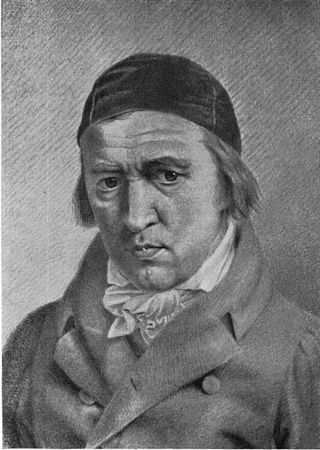
Johann Heinrich Meyer was a Swiss painter, engraver and art critic. He served as the second Director of the Weimar Princely Free Drawing School. A close associate of Johann Wolfgang von Goethe, he was often referred to as "Goethemeyer".
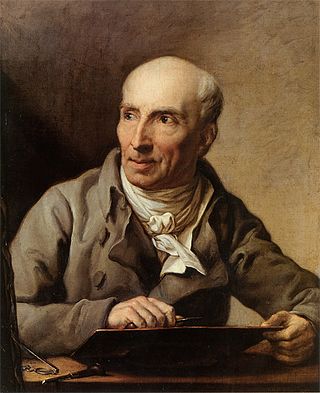
Johann Friedrich Bause was a German copper engraver; primarily of portraits.

Friedrich (Fritz) Bury was a German artist born in Hanau. He studied first under his father Jean Jacques Bury, who was a goldsmith and professor in the Academy of Design in Hanau, and then with Johann Heinrich Wilhelm Tischbein. In 1780 he visited Düsseldorf, and two years later went to Rome; thence to Dresden, and finally settled in Berlin, where he was patronized by the Queen of Prussia. He painted historical pictures and portraits. A 'Cupid triumphant' by him is in the Hague Gallery.

Adolf Schrödter or Adolph Schroedter was a German painter and graphic artist; associated with the Düsseldorf school of painting. He is considered to be one of the pioneers of German comics.

Johann Friedrich August Tischbein, known as the Leipziger Tischbein was a German portrait painter from the Tischbein family of artists.

Johann Eleazar Zeissig, also known as Schenau, was a German genre, portrait and porcelain painter, and engraver; director of the Royal Academy of Arts in Dresden.

Ferdinand Kobell was a German painter and copper engraver.
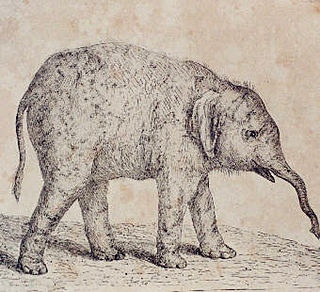
Johann Heinrich Tischbein, known as The Younger was a German painter and engraver from the Tischbein family of artists.
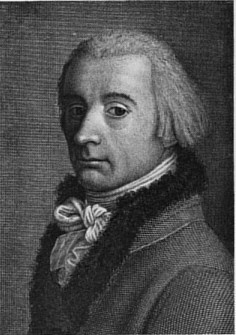
Johann Heinrich Lips was a Swiss copper engraver; mostly of portraits.
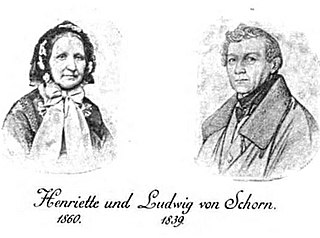
Johann Karl Ludwig Schorn, after 1838 von Schorn was a German art historian and university Professor. His second wife was the poet, Henriette von Schorn.

Johann Konrad Horny was a German painter, graphic artist, and copper engraver.
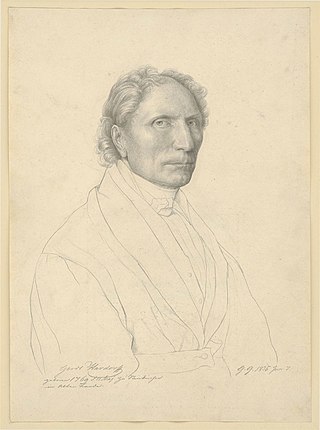
Gerdt Hardorff was a German painter, art collector and drawing teacher. He is sometimes referred to as The Elder to distinguish him from his son, Gerdt, who also became a painter.

Juliane Wilhelmine Bause was a German painter and copper engraver.
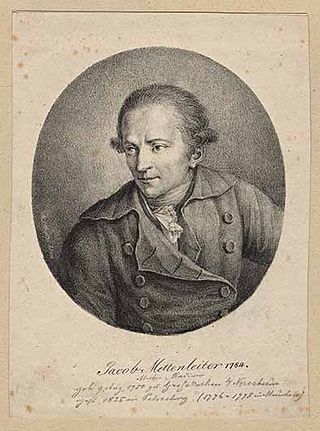
Heinrich Eduard Winter (also von Wintter; was a German painter, lithographer and drawing teacher in France and Munich.
Friedrich Ludwig Heinrich Waagen also Christian Friedrich Ludwig Heinrich Waagen, Wagen or Wage) was a German portrait, history and landscape painter. Hardly anything is known about his works. However, he had acquired extensive knowledge of art, amassed a collection of paintings in Hamburg and was known to friends with or in-laws of many important personalities of his time. Gustav Friedrich Waagen (1794-1868) and Carl Waagen (1800-1873) are his sons.

Friedrich Wilhelm L'Allemand, known as Fritz was an Austrian history painter.
This page is based on this
Wikipedia article Text is available under the
CC BY-SA 4.0 license; additional terms may apply.
Images, videos and audio are available under their respective licenses.




















